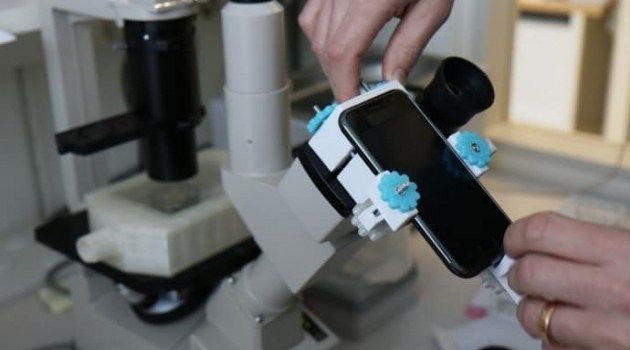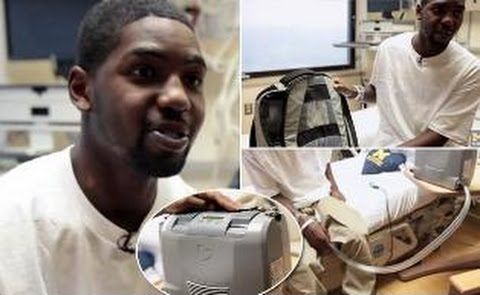But experts across the field say hope is not lost. They believe we will have some form of drug against the disease by 2025, albeit most likely a pilot version that will need to be upgraded.
Category: biotech/medical
Very cool; I do look forward to see where we land in the next 5 years on mobile imaging systems.
Years ago I remember developing software for a mobile blood gas analyzer to help researchers and doctors in some of the world’s most remote locations. And, the technology then did improve survival rates for so many. And, I see advances like this one doing so much for many who do not have access or the luxury of centralize labs, or hospitals, etc.
Democratizing Cellular Time-Lapses with a Cell-Phone!
A group of researchers from Uppsala University have recently developed an affordable system capable of capturing time-lapse videos of living cells under various conditions. Dubbed the affordable time-lapse imaging and incubation systm (ATLIS), the system can be constructed out of off-the-shelf electronic components and 3D-printed parts while using a standard smartphone for imaging.
While there have been other microscope adapters for smartphones to enable easy image capturing, the ATLIS is much more than microscope smartphone adapters. It is optimised in order to convert old microscopes found in abundance in Universities and hospitals into full-fledged time-lapse systems to image cell dynamics. Such a system requires strict environmental control of temperature, pH, osmolarity and light exposure in order to maintain normal cell behaviour.
Is it safe to remove senescent cells? This is a common question we hear when talking about senolytic therapies designed to remove these problem cells that accumulate with age and play havoc with the body and its ability to repair.
Mantas from CellAge answers a question from one of our readers about senescent cell removal therapy. The removal of senescent cells has become a very hot topic this year with numerous experiments showing positive results for health and disease mitigation.
Check out the campaign at Lifespan.io and donate to a better healthier future:
https://www.lifespan.io/campaigns/cellage-targeting-senescent-cells-with-synthetic-biology/
What humans will look like in 100 years: Expert reveals the genetically modified bodies we’ll need to survive
- Harvard researchers says to survive the next extinction we must leave the Earth
- But to live on other planets we will need to genetically modify our organs
- Experts have previously speculated how humanity will look in 1,000 years’ time
- Video describes scenario in which bodies are part-human part-machine
By Harry Pettit For Mailonline
More progress in treating MS.
In findings that show the effectiveness of a new strategy for treating multiple sclerosis (MS), researchers are reporting positive results from three large, international, multicenter Phase III clinical trials of the investigational drug ocrelizumab (brand name Ocrevus) in both relapsing multiple sclerosis (RMS) and primary progressive multiple sclerosis (PPMS).
The trial results are published online on Dec. 21, 2016, in The New England Journal of Medicine (NEJM), and are discussed in an accompanying editorial.
In multiple sclerosis, the immune system attacks the body, making it a so-called autoimmune disease. To date, all MS drugs have targeted the immune system’s T cells. Ocrelizumab, in contrast, depletes populations of the immune system’s B cells.
https://youtube.com/watch?v=Gb8H8aFAp5I
Humans’ relationship with technology is growing ever-more intimate. In a sense, we have already become cyborgs, tethered to our external electronic devices, outsourcing to them our memories, our sense of direction, our socializing, our lives. But, if the past year’s technological advancements are any indication, our relationship with technology is going to get a whole lot closer. Technology could one day soon become regularly integrated with our biology to manage disease and augment human ability. Here were some of the biggest breakthroughs of the past year on the cyborg front.









